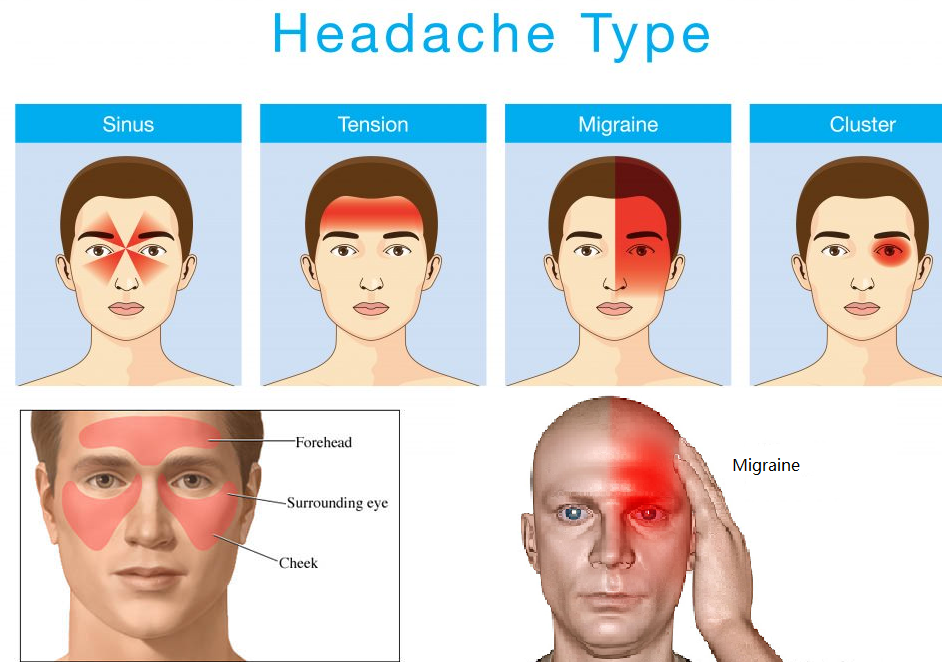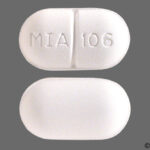Headaches are associated with more than 300 known medical conditions. Sometimes they are caused by the disease, and sometimes the conditions.
One of these conditions is sinusitis, which is commonly misdiagnosed.

Sinus headaches and tension headaches are two distinct types of headaches that can have different causes, symptoms, and characteristics. Understanding the differences between them can help individuals identify and manage their headaches more effectively. Here’s a comparison:
Sinus Headache:
A sinus headache is a type of headache that is associated with sinusitis, which is the inflammation or infection of the sinuses. The sinuses are air-filled cavities located within the facial bones around the nose and eyes. When these cavities become inflamed or infected, they can produce pain and pressure in the forehead, cheeks, and the area around the eyes and nose, leading to a sinus headache.
- Cause: Sinus headaches are primarily associated with sinusitis, which is inflammation or infection of the sinuses (air-filled cavities around the nose and eyes). The headache results from the pressure and inflammation in the sinuses.
- Location of Pain: Sinus headaches typically cause pain and pressure in the forehead, cheeks, and the area around the eyes and nose. The pain may be felt on both sides of the face.
- Quality of Pain: The pain is often described as a constant, dull, aching sensation. It may worsen with head movements or when bending forward.
- Accompanying Symptoms: Sinus headaches are often accompanied by other symptoms of sinusitis, such as nasal congestion, thick yellow or green nasal discharge, facial tenderness or pressure, and a reduced sense of smell and taste.
- Triggers: Sinus headaches can be triggered or worsened by changes in atmospheric pressure (e.g., during weather changes or flights), allergies, infections, or exposure to irritants.
- Duration: Sinus headaches tend to be shorter in duration than migraines and may improve as the underlying sinus issue resolves.
Tension Headache:
A tension headache is a common type of headache characterized by mild to moderate pain and pressure in the head. It’s one of the most prevalent types of headaches, and while it can be uncomfortable, it’s usually not as severe as migraines. Here are the key features of tension headaches:
- Cause: Tension headaches are often associated with muscle tension and stress. The exact cause is not fully understood but may involve muscle contractions in the head and neck.
- Location of Pain: Tension headaches typically cause a band-like pain or pressure that wraps around the head. The pain is usually bilateral (affecting both sides) and often starts at the base of the skull or in the temples.
- Quality of Pain: The pain is often described as a steady, dull ache. It is not typically throbbing like a migraine.
- Accompanying Symptoms: Tension headaches are generally not associated with nausea, vomiting, or sensitivity to light and sound, which are common in migraines.
- Triggers: Tension headaches can be triggered or exacerbated by stress, anxiety, poor posture, muscle tension in the neck and shoulders, and lack of sleep.
- Duration: Tension headaches can be episodic (occurring occasionally) or chronic (frequent). They tend to last for hours or even days, but they are not usually as long-lasting as migraines.
In summary, the key differences between sinus headaches and tension headaches lie in their underlying causes, locations of pain, qualities of pain, accompanying symptoms, triggers, and duration. Sinus headaches are typically associated with sinusitis and involve pain and pressure around the forehead and face, while tension headaches are often related to stress and muscle tension, with pain typically encircling the head. Consulting a healthcare provider for a proper diagnosis can help determine the specific type of headache and guide appropriate treatment.
Signs and Symptoms of Sinus Headaches
Sinus headaches, caused by either viral or bacterial sinus infections, are relatively uncommon. These headaches are characterized by the following symptoms:
- Congestion and a stuffy nose.
- Thick and discolored nasal mucus.
- Facial pain or pressure.
- Reduced sense of smell.
- Swelling or puffiness in the facial area.
- Fever.
To help differentiate a sinus headache from other types of headaches, consider if you’re experiencing congestion and whether pressing on your cheeks or forehead (where the sinuses are located) causes discomfort. If congestion is absent and there’s no pain upon pressure, it’s more likely to be a migraine or tension headache.
How Are Migraines Different From Sinus Headaches ?
Migraines are far more prevalent than sinus headaches, affecting approximately 15 percent of adults in the United States. The reason migraines are sometimes mistaken for sinus headaches is that both can lead to facial pain and a runny nose. However, there are distinguishing factors:
- In migraines, nasal discharge tends to be thin and clear rather than thick and discolored.
- Migraine pain can occur in various areas. While sinus headaches mainly affect the face, migraines can cause pain around the temples, high in the forehead, or at the back of the head. They often manifest on one side of the head, in contrast to sinus headaches that are typically felt on both sides of the face.
- Migraines frequently involve a throbbing or pulsing pain, unlike the pressure associated with sinus headaches.
Treatment for Sinus Headaches and Migraines Despite some similarities, the treatment approach for sinus headaches and migraines can differ:
- For sinus headaches, addressing the underlying sinus infection is key to resolving the headache. Over-the-counter (OTC) headache medications can also help alleviate pain and inflammation.
- Migraines are more complex and may not respond well to conventional OTC pain relievers. Some prescription migraine medications are designed to provide relief once a migraine has started, while others aim to prevent them by addressing the underlying physiological triggers.
Pain Medications, Pain Relief, and Pain Management








